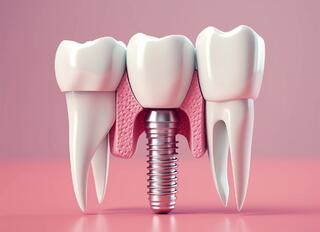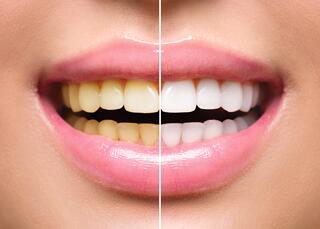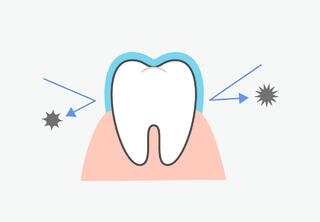Indications for a Front Tooth Filling
Restoring a front tooth is a popular procedure in dental clinics because it can quickly restore a beautiful smile. Restoration is carried out for several reasons:
- A crack or chip.
- Misalignment of teeth.
- Altered natural enamel color.
- Erosion or partial damage.
- A gap between teeth.
A patient with bruxism strongly clenches their jaws — their head tilts downward, leading to a shift in the central axis and posture disruption. Nighttime bruxism can lead to the development of sleep apnea. The consequences of the pathology hinder proper tooth restoration.
Since front teeth do not partake in chewing, the primary objective of aesthetic restoration is to craft a beautiful smile by restoring the teeth's anatomical and optical qualities. Hence, the dentist custom selects the composite material and restoration method.
For cavities on the tooth's back side, a photopolymer filling is more appropriate. However, minor defects on the visible side can be fixed with ceramic veneers. Veneers cost more than composite materials but justify their price by offering a Hollywood smile with a durable lifespan.
A photopolymer restoration can last between 3 to 9 years. Its durability depends on the material's quality and the dentist's adherence to the process.
Cost of a Front Tooth Filling
Several factors influence the final cost of a filling. The price for a complete filling service is determined after an X-ray and consultation with the dentist.
Which Are Better
Light-cured fillings are durable, offer a variety of shades, and natural transparency. Dentists frequently use light-cured filling materials for tooth restoration. Photopolymers are also utilized for making inlays, repairing chips in ceramic crowns, and creating veneers.
Chemical fillings are rarely used in dental practice. Light-cured fillings are far superior to chemical ones in several respects. They are more durable, aesthetically pleasing, bond tightly with tissues, and offer a wide selection of shades. Leading specialists in dental clinics recommend them.
Installation Phases
Light-cured fillings are durable, offer a variety of shades, and natural transparency. Dentists frequently use light-cured filling materials for tooth restoration. Photopolymers are also utilized for making inlays, repairing chips in ceramic crowns, and creating veneers.
- Examination, consultation, diagnosis.
The dentist examines the damaged teeth and directs the patient for X-ray imaging. Based on the X-ray results and visual examination, the dentist agrees on a treatment plan with the patient (selects the material, taking into account the fragment to be restored). - Preparation (Initial Stage).
Performs a preliminary cleaning of the tooth surface from plaque. Uses polishing paste. Then, the dentist selects a shade, applies local anesthesia. To minimize discomfort from the injection, the gum is treated with an anesthetic solution. - Preparation (Tooth; Gum).
Isolates the gum with a cotton roll or rubber dam. Prepares the tooth using a spherical bur, removes necrotized dentin. Degreases the surface. Uses an adhesive for strong bonding with the crown part. - Installation.
Applies the photopolymer in layers. Cures each layer with an ultraviolet lamp. - Polishing.
Polishes the light-cured filling. Adds shine with polishing paste. At the end of the procedure, checks the occlusal contact. If necessary, adjusts the restoration.
After a composite filling, it's crucial to regularly visit the dentist for professional oral hygiene. The dentist removes plaque, tartar, and polishes the filled area. If the composite is smooth, plaque accumulates more slowly, preserving its color longer.
Cost of a Front Tooth Filling
Advantages:
- Safe for use in children.
- Complete restoration in just one procedure.
- Durability.
- Invisibility, light permeability.
- A variety of material shades.
- Flexible, universal material suitable for all types of teeth.
- The composite can be repaired or replaced.
- Firm bonding with tooth tissues, preventing bacterial infiltration.
- Accurate restoration, enabling artistic repairs of any complexity.
Disadvantages:
- Color alterations in the composite due to external influences (food dyes, beverages).
- Without restoration procedures, the lifespan of the material does not exceed 4 years.
An Alternative Option – Veneers
Cosmetic dentistry corrects cosmetic defects of the front teeth and restores a beautiful smile using veneers. These micro-prosthetics are applied to the front surface of the teeth. They are crafted from ceramics, zirconium dioxide, porcelain, or photopolymers.
The necessary number of veneers is determined after consulting with the dentist. For some, 6 plates in the smile zone may suffice, while others may need up to 10. It all depends on the clinical picture and the patient's financial capacity.
Installing veneers on molars is impractical. Even the most robust plate will suffer damage under the daily chewing pressure.
Caring for Teeth After Composite Restoration
To preserve the original look and integrity of filled teeth, adhere to these guidelines:
- Use a brush with soft bristles.
- Brush teeth twice daily.
- Rinse your mouth after meals.
- Steer clear of abrasive toothpaste.
- Avoid products that have staining properties (coffee, black tea, natural juice, red wine, etc.).
- Visit the dental clinic every six months for the dentist to assess the condition of the filling material and to remove plaque.
Frequently Asked Questions
What are fillings for front teeth, and why are they needed?
Fillings for front teeth are dental restorations used to repair damage to the tooth structure caused by decay, wear, or injury. They are specifically designed for front teeth, crucial for aesthetics and functionality. Fillings restore the shape and strength of a tooth and prevent further decay by sealing off areas where bacteria can enter.
What materials are used for fillings in front teeth, and how to choose the best one?
The most common materials for front tooth fillings are composite resins, glass ionomer, and porcelain. Composite resins are popular because they can be matched to the color of existing teeth, providing a more natural appearance. Glass ionomer fillings release fluoride, which helps protect the tooth from further decay. Porcelain fillings, also known as inlays or onlays, offer a durable and aesthetic solution but are more expensive.
Choosing the best material depends on several factors, including the location of the filling, the extent of decay, insurance coverage, and aesthetic preferences. Your dentist will recommend the most suitable material based on your specific needs.
Is getting a filling in a front tooth painful?
Most people experience little to no discomfort during the filling process thanks to local anesthesia, which numbs the area around the filling. You might feel pressure or vibration during the removal of decay, but it shouldn't be painful. Some sensitivity or mild discomfort may occur after the anesthesia wears off, but this usually subsides within a few hours or days.
How long do fillings in front teeth last?
The lifespan of a front tooth filling depends on the material used and adherence to oral hygiene practices. Composite resin fillings can last from 5 to 10 years, while porcelain fillings, with proper care, can last more than 15 years. Regular dental check-ups, good oral hygiene, and avoiding habits like biting on hard objects can help extend the life of your fillings.












